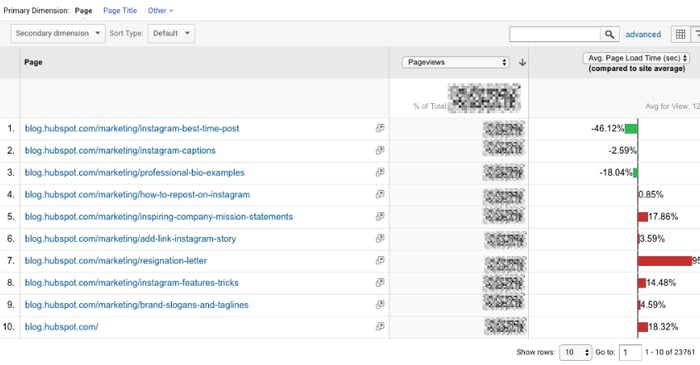Master Site Insights With Accurate Google Analytics Tracking Code
The efficient use of Google Analytics pivots on the exact application of its tracking code, a fundamental step frequently neglected by website owners. This apparently straightforward JavaScript bit, when properly placed, becomes the backbone of information collection, giving understandings into user behavior and internet site efficiency. However, challenges can emerge throughout configuration, potentially skewing the information and causing misinformed choices. Recognizing these ins and outs is vital for making best use of the advantages of analytics. What are the common challenges that could weaken your tracking initiatives, and how can you make certain accuracy in your approach?
Understanding Google Analytics Essentials
Google Analytics is a vital device for site proprietors and online marketers, giving indispensable understandings into individual actions and website efficiency. At its core, Google Analytics collects information concerning visitors to a web site, permitting users to examine metrics such as website traffic sources, individual involvement, and conversion prices. Understanding these basics is critical for optimizing a web site's performance and boosting user experience.
The system uses cookies to track interactions, tape-recording information such as web page sights, session periods, and bounce prices. This details is accumulated and offered through customizable dashboards, allowing individuals to picture fads with time. Trick efficiency indications (KPIs) can be monitored, such as the total number of users, brand-new versus returning site visitors, and the geographical circulation of the target market.
Additionally, Google Analytics uses division functions, enabling individuals to isolate particular traffic sources or user demographics for even more targeted evaluation. By understanding these fundamental aspects, web site owners can make informed decisions about material strategy, advertising and marketing campaigns, and general site improvements. Ultimately, understanding Google Analytics essentials is crucial for leveraging information to drive growth and achieve business purposes successfully.
Establishing Your Tracking Code

Copy the provided monitoring code and paste it into the HTML of your website. This makes certain that the monitoring code loads prior to any type of other web content, enabling it to capture information accurately.
After installation, confirm that the tracking code is operating properly by utilizing Google Tag Aide or the Real-Time reports in Google Analytics - when does the google analytics tracking code send an event hit to analytics?. This action is vital to confirm that your information collection is accurate and energetic, establishing the structure for informative evaluation
Typical Monitoring Code Issues
Lots of site proprietors come across common problems with their Google Analytics tracking code that can hinder data collection and evaluation. One prevalent concern is improper installment. This may happen when the monitoring code is put in the incorrect section of the web site's HTML, often bring about absent or incomplete data. In addition, having multiple instances of the monitoring code on a solitary page can lead to look at this web-site filled with air metrics, as user communications may be counted a lot more than once.
One more concern emerges from using ad blockers, which can avoid the monitoring code from carrying out completely, hence skewing data. when does the google analytics tracking code send an event hit to analytics?. Furthermore, failure to set up filters properly can bring about the exemption of crucial traffic sources or the inclusion of unwanted recommendation spam, distorting the data gathered
Site owners may likewise neglect the significance of tracking code updates, especially when migrating to Google Analytics 4 (GA4) from Universal Analytics. Lastly, insufficient testing prior to releasing adjustments can lead to unnoticed errors in the tracking code, further complicating information integrity. Attending to these typical issues is essential for ensuring accurate monitoring and insightful analytics.
Analyzing Internet Site Information Efficiently
Accurate information collection is only the initial step in leveraging Google Analytics; the actual worth hinges on effectively examining that data to drive informed decision-making. To attain this, it is necessary to determine essential efficiency signs (KPIs) that align with your organization objectives. Concentrate on metrics such as conversion prices, individual interaction, and website traffic sources, useful site as these will offer insights into individual actions and the general effectiveness of your web site.
Making Use Of Google Analytics' segmentation functions enables a deeper understanding of your target market. By breaking down information into details demographics, habits, and website traffic channels, you can reveal patterns and patterns that educate targeted strategies. Applying customized records and dashboards can simplify this process, allowing fast access to significant data.
Moreover, frequently assessing data patterns with time helps to determine abnormalities and opportunities for enhancement. Make use of visualization devices to present data in a quickly absorbable layout, helping with a lot more reliable communication with stakeholders. Eventually, the capability to assess site data successfully encourages businesses to make tactical decisions that improve individual experience, optimize advertising efforts, and drive development.

Finest Practices for Accurate Tracking
Applying efficient monitoring methods is essential for obtaining trustworthy data in Google Analytics. To make certain precise monitoring, begin by correctly setting up the Google Analytics tracking code on every page of your useful source web site. This can be accomplished with a tag manager or by directly installing the code into the HTML.
Following, configure your Google Analytics account to exclude interior website traffic. This can be done by setting up filters that determine and remove gos to from your company's IP address, therefore avoiding skewed information. In addition, utilize event tracking to keep an eye on details user interactions, such as downloads or video plays, which common web page sights may neglect.
On a regular basis examine your tracking setup to confirm that all functions, such as goals and ecommerce tracking, are working appropriately. Develop a regular identifying convention for your occasions and projects to facilitate easier coverage and analysis.
Last but not least, take into consideration leveraging UTM criteria for projects to obtain understandings right into the efficiency of various advertising and marketing initiatives. By complying with these finest methods, you can improve the accuracy of your data collection and analysis, inevitably bring about even more enlightened decision-making for your web site.
Final Thought
Precise application of the Google Analytics tracking code is important for mastering website insights. By ensuring the monitoring code is appropriately put and frequently investigated, website proprietors can record crucial individual interaction information, therefore helping with the identification of vital efficiency indicators. Reliable evaluation of this data, incorporated with adherence to finest practices, makes it possible for educated decision-making and the optimization of online strategies. Inevitably, a robust monitoring framework boosts the capability to drive engagement and boost general website efficiency.

Not enough screening prior to launching changes can result in undetected mistakes in the monitoring code, even more complicating information dependability.Carrying out effective tracking techniques is vital for acquiring reputable data in Google Analytics. By guaranteeing the monitoring code is properly placed and routinely examined, web site owners can record important user communication data, hence assisting in the identification of vital performance indications.